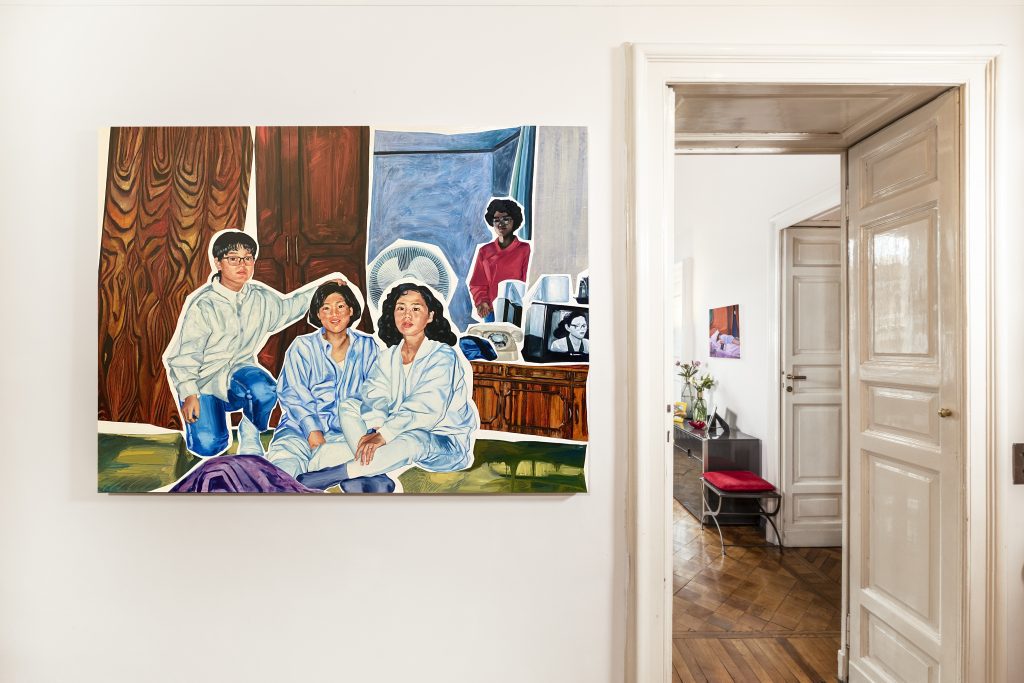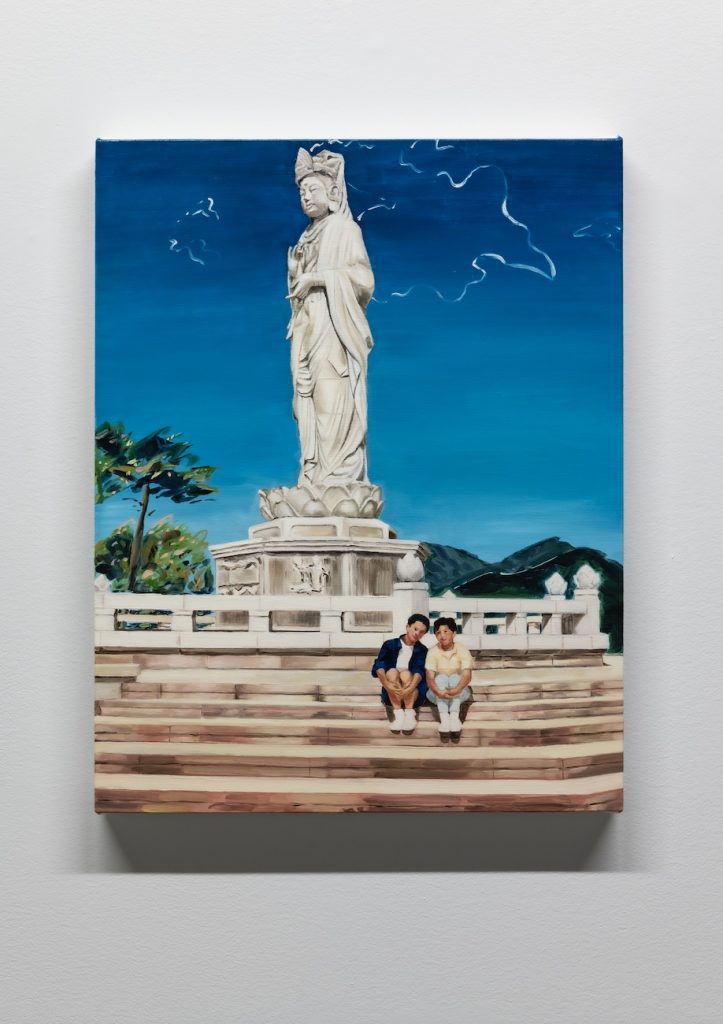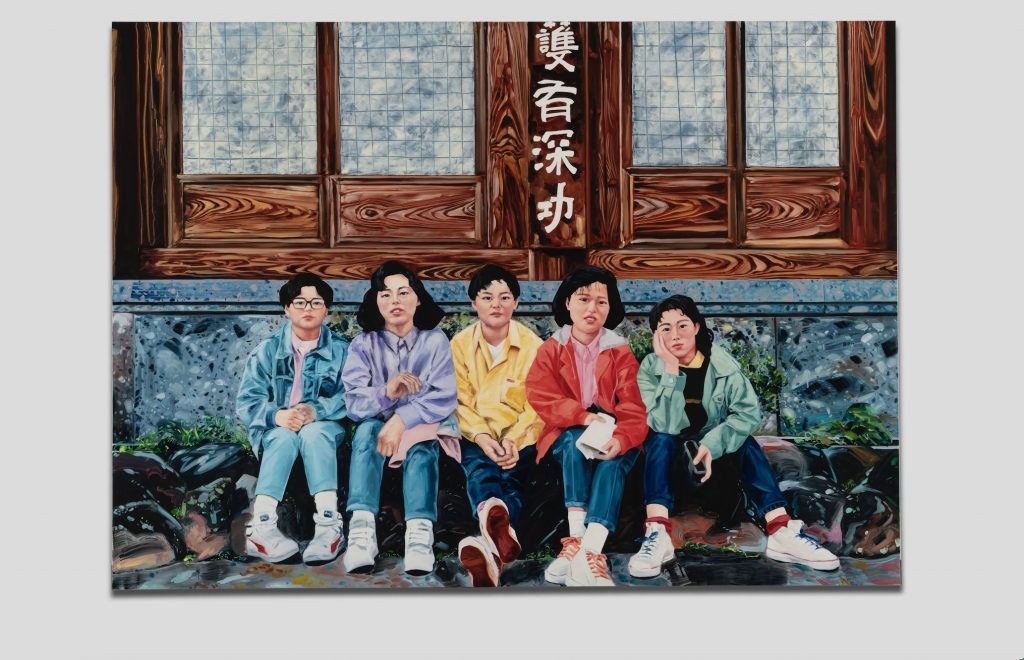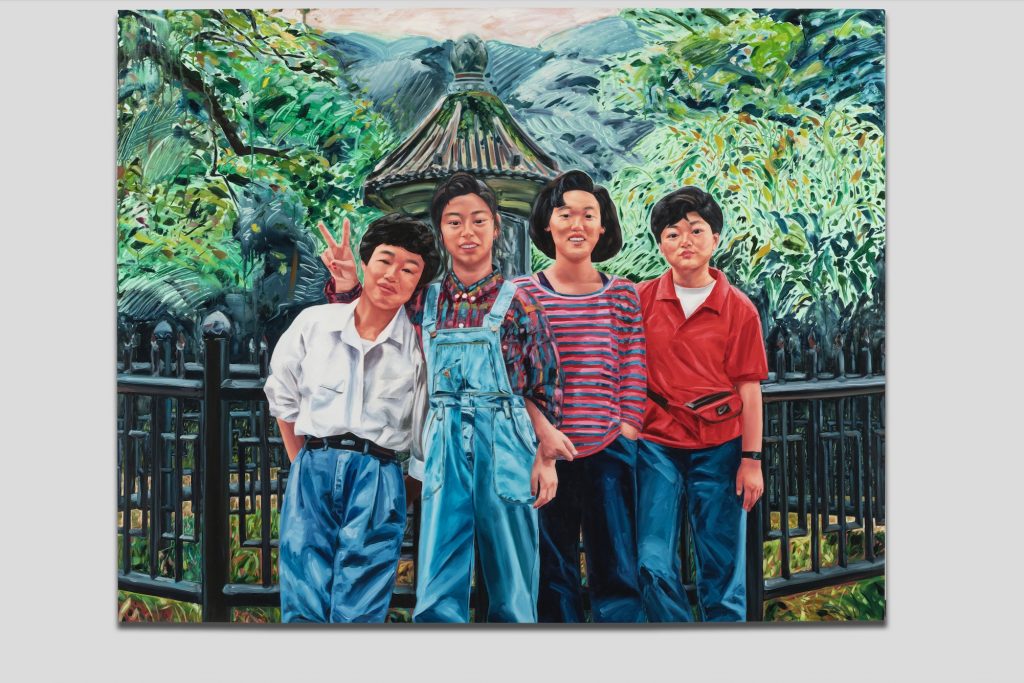New York-based artist Ji Woo Kim explores themes of identity in the context of race and ethnicity while questioning the concept of home in relation to her own background as a first-generation immigrant. Through her work, she examines resulting factors such as cultural identification and social dynamics, as well as their effects on one’s growth from childhood through adulthood.

Tell us a little bit about yourself. Where are you from originally and when did art first enter your life?
I was born in South Korea, immigrated to British Columbia, Canada after kindergarten, and I’m currently based in New York. Art naturally came into my life at a young age, as I grew up very close to my uncle who is an architect; since childhood we’ve spent hours drawing together, and that’s definitely left a big impact on my life as an artist.
Has your work always taken on the style it currently embodies?
No, surprisingly, I used to paint gestural abstractions during my undergraduate years at Pratt Institute. A year after I got my BFA and returned to Canada was when I started painting figuratively.
What’s a day in the studio like for you?
It’s pretty straightforward as I don’t like spending time in the studio doing other things apart from working. When I get to the studio, I put my bag and jacket down, put on my apron, and get straight to work. Then it’s just painting for hours straight while listening to music before I pack up and leave. I don’t really take breaks either other than short bathroom breaks as I’d rather just get the work done while I’m in the zone and then be on my way.

What’s next for you?
In terms of exhibitions, I’ll be part of a group show at Stems Gallery’s Brussels location in February, and I have a solo show with Carl Kostyál in their London space in late 2023.
From where do you draw inspiration?
As my work has to do with community and the feeling of belonging/displacement in regards to my own experience of growing up as a 1.5 generation immigrant, I read and consume books, articles, and other types of media that are related to said topic. One of my favorite books that I read in 2022 was “Disorientation” by Elaine Hsieh Chou, and I’m currently reading “Sour Heart” by Jenny Zhang.
Have you always painted in the style your work currently inhabits?
In recent months I’ve started to make paintings that have a paper cut-out or collage effect, speaking to the idea of constructing one’s own identity and past history.

What source material do you base your work off of?
The body of work I’m currently working on is based on photos of my mom when she was a college student in South Korea. I’m drawn to these photos as they show a sense of community and true belonging between the people and the physical and cultural environments they are situated in.
Does your work reference any Art Historical movements?
I wouldn’t say my work directly references any art historical movements, but some of the gestural mark making I do in the ground of the paintings have been carried over from the days I used to paint abstractly, and back then I was looking at a lot of abstract expressionist painters.
What is your process like? How do you begin a work?
With the cut-out/collage paintings, I print out a scan of the original photograph, cut the pieces by hand and arrange it against a white sheet of paper to see roughly what I want the composition to look like. I never glue the pieces down for a final draft to paint from though. It’s more of a preparatory exercise to see what it may look like, and after I do it, I just put the cut up pieces of paper into a pile that I don’t usually return to. It might be easier to do this process as a digital collage on Photoshop, but I prefer to work in a more tactile and also fleeting way.

At the end of every interview, we like to ask the artist to recommend a friend whose work you love for us to interview next. Who would you suggest?
I would recommend Timothy Lai!